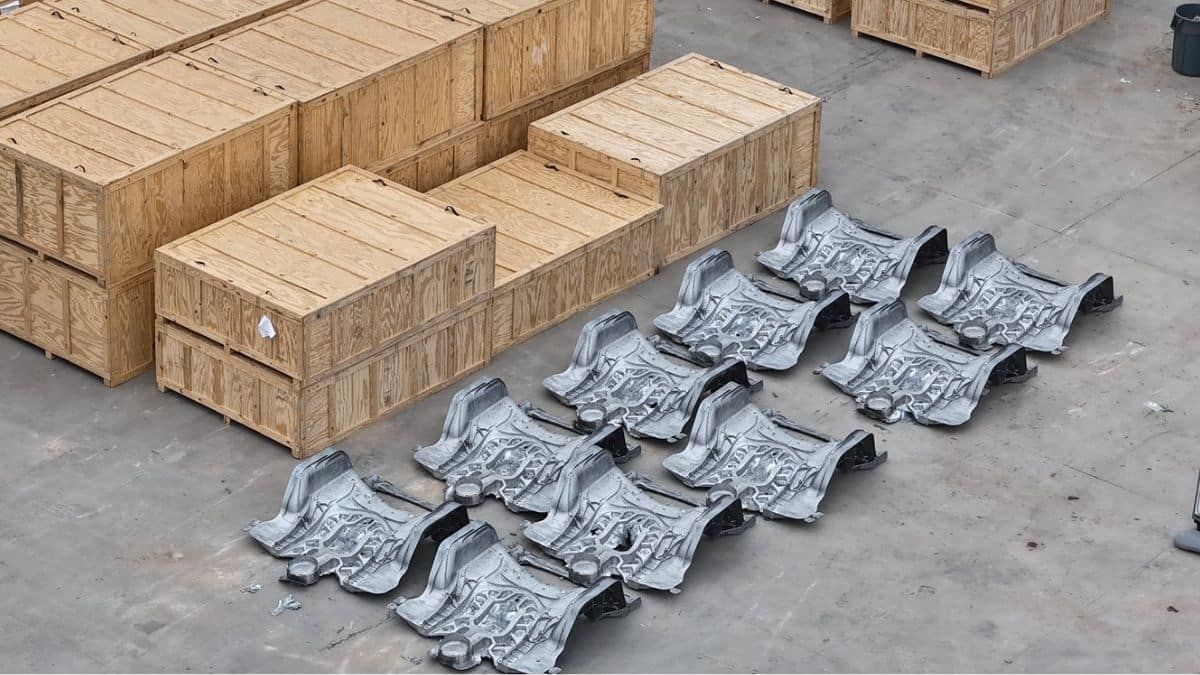While the exact reason of crated Cybertruck castings departing the facility remains unconfirmed, Tegtmeyer offers a compelling theory: these castings could be spare parts intended for repairs as Cybertruck deliveries ramp up.
This development aligns with Tesla's well-known forward-thinking approach to both manufacturing and customer service. By preemptively stockpiling spare parts, Tesla aims to ensure efficient repairs and minimize downtime for Cybertruck owners.
However, the question arises: wouldn't extensive chassis damage, requiring a complete front or rear casting replacement, likely render the vehicle totaled?
While the answer depends on specific scenarios and insurance coverage, it's true that significant frame damage often leads to a vehicle being declared a total loss. In such cases, the crated castings might be utilized for salvage or recycling purposes, further demonstrating Tesla's commitment to sustainability.
6 March 2024 Giga Texas! Low clouds & misty skies, but still lots to see! I think I know why crated Cybertruck castings are departing the site … these are spares to be used for repairs now that Cybertrucks are being sold in larger numbers! The new platform at the Cathode plant… pic.twitter.com/uFqrlcBvqb
— Joe Tegtmeyer(@JoeTegtmeyer) March 6, 2024
Regardless of the final destination of these crated Cybertruck parts, their presence signifies the intricate dance of supply and demand in the world of cutting-edge technology. Witnessing this alignment between spare parts shipments and increasing sales underscores Tesla's dedication to both customer satisfaction and manufacturing efficiency.
Latest Update: I don't know how many Cybertrucks Tesla currently produces per week. However, we consistently see 100-140 Cybertrucks in the parking lots of GIga Texas, if that's any indication.
I think these things are important to know for several reasons:
1. Insights into Tesla's manufacturing and customer service strategy: It sheds light on Tesla's proactive approach to parts inventory management, potentially indicating a commitment to efficient Cybertruck repairs and minimizing customer downtime.
2. Understanding the complexities of electric vehicle repair: It sparks discussion about the unique challenges associated with repairing a vehicle with an unconventional structure like the Cybertruck's exoskeleton.
3. Encourages discussion about innovation in customer service: It prompts readers to consider how Tesla might leverage its forward-thinking approach to address potential repair challenges and ensure customer satisfaction for the Cybertruck.
Do you think pre-stockpiling spare parts like Cybertruck castings is a wise strategy for Tesla? How do you envision the repair process for extensive Cybertruck body damage, considering the unique exoskeleton design?
What other innovative approaches might Tesla implement to ensure efficient repairs and customer satisfaction for the Cybertruck?
Armen Hareyan is the founder and the Editor in Chief of Torque News. He founded TorqueNews.com in 2010, which since then has been publishing expert news and analysis about the automotive industry. He can be reached at Torque News Twitter, Facebook, Linkedin, and Youtube. He has more than a decade of expertise in the automotive industry with a special interest in Tesla and electric vehicles.





